Jeffrey D. Blaustein, Abel Lajtha9780387303628, 0387303626
Table of contents :
Cover Page……Page 1
Title: Handbook of Neurochemistry and Molecular Neurobiology – Behavioral Neurochemistry, Neuroendocrinology and Molecular Neurobiology……Page 2
ISBN 978‐0387303628……Page 3
Table of Contents (with page links)……Page 6
Preface……Page 4
Contributors……Page 9
1 Neuroendocrinology of Male Reproductive Behavior……Page 13
1 Introduction……Page 14
2 Methods of Studying Appetitive versus Consummatory Components of Male Sexual Behavior as well as Erectile Function……Page 15
3.1 Effects of Castration and Systemic Administration of Steroids or Antagonist Drugs……Page 17
3.2 Species and Genotype Variations in the Effects of Castration and Hormone Replacement on Male Sexual Behavior……Page 20
3.3 Effects of Hypothalamic Implantation of T, E, DHT or Antagonist Drugs on the Expression of Sexual Behavior……Page 21
3.4 Extra-Hypothalamic Sites of Sex-Steroid Activation of Male Sexual Behavior……Page 23
3.5 MPOA/AH Sex Steroid-Dopamine Relationships in the Control of Male Sexual Behavior……Page 25
3.6 Androgenic Facilitation of Penile Erectile Function……Page 26
4 Sex Steroids, Acting Perinatally in the Male Brain, “Organize” Neural Mechanisms Controlling Male-Typical……Page 27
4.1 Contribution of Testosterone (T) Acting via Androgen Receptor (AR)……Page 28
4.2 Contribution of E, Aromatized in Brain from T, Acting via E Receptor (ER) alpha and beta……Page 29
4.3 Possible Interactions of AR and ERalpha in the Organization of Male Sexual Behavior……Page 30
4.4 Steroid Receptor Coactivators, GABA, and Prostaglandin-E2 as Possible Mediators of Sex Hormone- Dependent Behavioral Masculinization……Page 33
5 Relationship Between Sexually Dimorphic Hypothalamic Morphology and.Male-Typical Sexual.Behavior and Partner Preference……Page 34
References……Page 37
2 Neurochemistry of Male Sexual Behavior……Page 49
1 Introduction……Page 50
2.3 Postejaculatory Behavior and Satiety……Page 51
2.6 Sexual Behavior Throughout the Lifespan: Puberty and Aging……Page 52
2.7.2.1 Spontaneous Erections……Page 53
3.1 General Considerations……Page 54
3.2.1.1 Effects of Systemically or Intraventricularly Administered Drugs……Page 55
3.2.1.2 Role of DA in Specific Brain Areas……Page 58
3.2.2.1 Effects of Systemically or Intraventricularly Administered Drugs or Lesions of Cell Groups……Page 67
3.2.2.2 Role of NE in Specific Brain Areas……Page 68
3.2.3.1 Effects of Systemically or Intraventricularly Administered Drugs or Lesions of Cell Groups……Page 69
3.2.3.2 Role of 5-HT in Specific Brain Areas……Page 71
3.2.4.2 Role of ACh in Specific Brain Areas……Page 73
3.2.5.2 Role of Glutamate in Specific Brain Areas……Page 74
3.2.6.1 Effects of Systemically Administered Drugs……Page 75
3.2.7.1 Role of NO in Penile Erection……Page 76
3.2.7.3 Role of NO in Specific Brain Areas……Page 77
3.2.8.1 Effects of Systemically or Intraventricularly Administered Drugs……Page 79
3.2.7.4 Paraventricular Nucleus……Page 78
3.2.8.2 Role of Opioids in Specific Brain Areas……Page 80
3.2.9.1 Effects of Systemically or Intraventricularly Administered Drugs……Page 81
3.2.10 Oxytocin……Page 82
3.2.10.2 Role of Oxytocin in Specific Brain Areas……Page 83
3.2.11.1 Effects of Systemically or Intraventricularly Administered Drugs……Page 84
3.2.12.2 Role of Galanin in Specific Brain Areas……Page 85
3.2.14.2 Prostaglandin E2……Page 86
3.2.14.8 Hexarelin Analog Peptides……Page 87
References……Page 88
3 Feminine Sexual Behavior from Neuroendocrine and Molecular Neurobiological Perspectives……Page 107
2 Description of Behaviors……Page 109
3.1 Copulatory Behaviors……Page 110
3.2 Paracopulatory Behaviors……Page 111
3.3 Progestative Behaviors: Pacing……Page 112
3.4 Sexual Motivation……Page 113
4 Cellular Mechanisms of Hormone Action……Page 114
4.1.1 Estrogen Receptor Distribution in Brain……Page 116
4.1.2.2 Estrogen Antagonists……Page 117
4.1.4 Involvement of Coregulators of Estrogen Receptors……Page 118
4.1.6 Regulation of Neural Estrogen Receptors by Ovarian Hormones……Page 119
4.2 Progestin Receptors……Page 120
4.2.1 Progestin Receptor Distribution in Brain……Page 121
4.2.2 Progestin Receptors and Facilitation of Feminine Sexual Behavior……Page 122
4.2.3.3 Progestin Receptor Gene Disruption……Page 123
4.2.4 Multiple Progestin Receptor Isoforms……Page 124
4.2.6.1 Downregulation of PRs Leads to Estrous Termination……Page 126
4.2.6.2 Downregulation of Progestin Receptors and the Progesterone-Induced Refractory Period……Page 127
4.3 Membrane Estrogen and Progestin Receptors (Nongenomic and Indirect Genomic)……Page 129
5 Neuroanatomy: Role of the Ventromedial Hypothalamus……Page 130
6 Intracellular Signaling Pathways Involved in Feminine Sexual Behavior……Page 134
7.1 Ligand-Independent Activation of PRs……Page 136
7.2 A Mechanism for Ligand-Independent Activation……Page 137
8.1 Short-Term Slowing of Sexual Response by Vaginocervical Stimulation: Pacing……Page 138
8.2 Short-Term and Long-Term Enhancement of Sexual Responding by Mating Stimuli……Page 139
8.3 Longer Latency Inhibition of Sexual Behavior by Mating Stimuli: Heat Abbreviation……Page 140
9 Mechanisms of Changes in Sexual Responsiveness: Mating Enhancement Requires Ligand- Independent Activation of Progestin Receptors……Page 141
10 Sites of Integration Between Information About Social Environment and Hormonal Milieu……Page 142
11 Integration of Approaches……Page 143
References……Page 144
4 The Neurochemistry of Limbic-Hypothalamic Circuits Regulating Sexual Receptivity……Page 163
2 Lordosis……Page 166
3 Hormonal Modulation of Lordosis Reflex……Page 168
4 Opioid Regulation of Lordosis……Page 171
4.1 MOP……Page 172
4.2 DOP……Page 173
4.4 NOP……Page 174
5 Neuropeptide Y……Page 175
7 Oxytocin……Page 176
9 Cholecystokinin……Page 177
10 Gonadotropin Releasing Hormone/Luteinizing Hormone Releasing Hormone……Page 178
11 Substance P and other Tachykinins……Page 179
14 Serotonin……Page 180
15 Dopamine……Page 181
16 Norepinepherine……Page 182
18 Glutamate……Page 183
20.1 Prostaglandins……Page 184
20.4 Nitric Oxide……Page 185
21 Conclusions……Page 186
Acknowledgments……Page 187
References……Page 188
5 Neuroendocrinology and Neurochemistry of Maternal Motivation and Behavior……Page 207
1 Introduction……Page 209
2.1 Active Maternal Behaviors……Page 210
2.3 Sensory Influences on Maternal Care……Page 211
3.1 Pregnancy and Parturition – the Optimal Endocrine Basis for Maternal Behavior and Maternal Motivation……Page 212
3.1.3 Minimum Endocrine and Physiological Elements Necessary for the Onset and Maintenance of Maternal Behavior……Page 213
3.2.1 Estrogens During Pregnancy and Postpartum……Page 214
3.3.2 Progesterone Influences on Maternal Behavior……Page 215
3.4.1 Prolactin and Related Hormones During Pregnancy and Postpartum……Page 216
3.5 Other Participants in the Processes of Pregnancy, Parturition, and Lactation……Page 217
3.6 The Brain as a Possible Source of Hormones that Regulate Maternal Behavior and its Neuroendocrine Processes……Page 218
4.1 Fundamentals of the Traditional Maternal Behavior Circuit – the Preoptic Area……Page 219
4.2.3 Habenula……Page 220
4.2.5 Septum……Page 221
4.3.2 Anterior and Mediobasal Hypothalamus……Page 222
4.4.2 Progestin Receptors……Page 223
4.4.4 Oxytocin Receptors……Page 224
4.4.5 Conclusions……Page 225
4.5.2 Progesterone……Page 226
5 Studies of Maternal Motivation……Page 227
6.1 Brief Description of Mesolimbic and Nigrostriatal Systems and their Anatomy/Neurochemistry……Page 234
6.1.2 Reward System Hierarchy……Page 235
6.2 Role of Dopamine and the Nigrostriatal and Mesolimbic Systems on Maternal Behavior and Motivation……Page 236
6.3 Changes in Dopamine Receptors Across Pregnancy and Lactation……Page 238
6.4 Influences of Ovarian and Pituitary Hormones on Nigrostriatal Neurotransmission……Page 239
6.5 Influences of Ovarian and Pituitary Hormones on Mesolimbic Neurotransmission……Page 240
7 The Future – Functional Integration……Page 241
References……Page 242
6 Neuroendocrinology, Neurochemistry, and Molecular Neurobiology of Affiliative Behavior……Page 259
3 The Point of Social Behavior……Page 260
4.1.2 Neural Circuitry of C. elegans Social Behavior……Page 261
4.1.3 Chemodetection (“olfaction”) is a Key Component of C. elegans Social Behavior……Page 262
4.3 Conclusions from the Molecular Dissection of Social Behavior in Invertebrates……Page 264
5.1.1 Maternal Behavior……Page 265
5.1.2 Social Recognition in Mice and Rats……Page 268
5.2 Maternal Bonding in Sheep……Page 272
5.3.1 Monogamous Behavior……Page 273
5.3.2 Oxytocin……Page 275
5.3.3 Vasopressin……Page 276
5.3.4 Neural Circuitry of Pair Bonding……Page 278
5.3.5 Bonding and Stress……Page 280
5.4.2 Endocrine and Socioenvironmental Influences on Social Behavior……Page 281
5.5.1 Oxytocin and Vasopressin……Page 282
5.5.2 Brain Imaging……Page 283
5.5.4 Foundations……Page 286
6 Conclusions……Page 287
References……Page 288
7 Neurochemistry and Molecular Neurobiology of Aggressive Behavior……Page 297
1 Opening Vignettes: Lessons from Lobsters and Birds……Page 298
2 Behavioral Foundations……Page 299
2.1.2 Territorial Aggression……Page 300
2.2.1 Bred for Aggression……Page 302
2.2.2 Frustration Aggression……Page 304
2.2.3 Instigation or Social Provocation……Page 305
3.1 Excitatory and Inhibitory Amino Acids: A Delicate Balance……Page 306
3.1.1 Critical Neuroanatomy……Page 307
3.1.2 Glutamate Receptors……Page 308
3.1.2.2 AMPA and Kainate Receptors……Page 309
3.1.3.1 Positive Allosteric Modulation……Page 310
3.2.1 Norepinephrine……Page 312
3.2.1.2 alpha and beta Receptors……Page 313
3.2.2.1 Amphetamines and Apomorphine……Page 314
3.2.2.3 Genetic Association and Manipulation……Page 315
3.2.2.5 Dopamine Levels……Page 316
3.3 Serotonin: Inhibitory Control versus Impulse……Page 317
3.3.2 Pharmaco-Challenge……Page 318
3.3.4 5-HT Receptors……Page 320
3.3.4.1 Serotonin1 Family……Page 321
3.3.4.3 Serotonin Transporter……Page 323
Outline placeholder……Page 0
3.4.2 Hypothalamic Vasopressin……Page 325
3.4.3 Cortical Glutamate and GABA……Page 326
3.4.5 Indirect Alterations by Gene Manipulation……Page 327
4 Conclusions……Page 328
References……Page 329
8 Novel Mechanisms Underlying Neuroendocrine Regulation of Aggression: A Synthesis of Rodent, Avian, and Primate Studies……Page 349
1 Introduction……Page 350
2.1 Androgens: Organizational Versus Activational Effects……Page 352
2.2 Androgens and Seasonal Aggression……Page 354
2.4 Glucocorticoids and the Development of Aggression……Page 357
2.5 Neurosteroids and Aggression……Page 358
2.6 Arginine Vasopressin and Dominant/Subordinate Relationships……Page 359
3.2 The Role of Testicular Hormones: Berthold’s Capons……Page 361
3.3 Field Endocrinology and the Challenge Hypothesis……Page 362
3.4 Possible Neural Sites of Action of Testosterone……Page 363
3.5 Brain Aromatase and Aggression……Page 365
3.6 Territorial Aggression During the Nonbreeding Season: Beyond Berthold……Page 366
3.7 Testosterone and Aggression in Juvenile Birds……Page 368
3.9 Arginine Vasotocin and Aggression……Page 369
4.1 Androgens and Aggression……Page 370
4.2 The Challenge Hypothesis……Page 372
4.4 Adrenal DHEA……Page 373
5 Conclusions……Page 374
References……Page 375
9 Molecular Neurobiology of Bird Song……Page 385
1.1 Reason #1: The Song-Control System……Page 387
1.2 Reason #2: Rich Opportunities to Study Song Learning……Page 388
1.4 Reason #4: Social and Environmental Integration……Page 390
2.1 Molecular Anatomy……Page 391
2.2.1 ZENK and Other Immediate Early Genes……Page 394
2.2.3 IEG Activation in Other Contexts……Page 395
2.2.4 IEG Activation in the Songbird Hippocampus……Page 396
3.1.1 Field Observations……Page 397
3.1.2 Laboratory Studies of Song-Recognition Learning……Page 398
3.1.3 Role of Gene Regulation in Song-Recognition Learning……Page 399
3.1.4 Other Molecular Mechanisms in Song-Recognition Learning……Page 401
3.2 Song-Production Learning……Page 403
3.2.2 Sensorimotor Learning……Page 404
3.2.3 Do Songbirds Dream Song?……Page 405
3.2.4 Song Crystallization……Page 406
3.3 Critical Issues for the Molecular Biology of Song Learning……Page 407
4.2 Sex Hormone Production in the Brain……Page 408
4.3 Regulation of Neuronal Birth, Death, and Replacement……Page 409
5.2 Seasonal and Photoperiod Effects……Page 410
5.3.4 Endocannabinoids……Page 411
6.1 Aromatase and Estrogen Receptor……Page 412
7 Critical Issues for the Future……Page 414
7.1 Gene Network Analysis……Page 415
References……Page 416
10 The Neuroendocrinology and Neurochemistry of Birdsong……Page 431
1.1 Why is Song Interesting from a Neuroendocrine/Neurochemical Perspective?……Page 432
1.2 Brief Description of Songbirds, Song, and the Song System……Page 433
2.1 Hormone Effects on Song Behavior……Page 435
2.2 Localization of Sex Steroid Hormone Receptors in the Song System and Other Areas Relevant to Reproductive Behavior……Page 437
2.3 Localization of Steroid Hormone Metabolizing Enzymes in the Song System……Page 440
2.5 Hormonally Regulated Adult Neuroplasticity in the Song Control System: Seasonal and Sex Differences……Page 444
2.6 Seasonal Dynamics in the Steroid Metabolizing Enzymes……Page 446
2.6.2 Pied Flycatcher……Page 447
3 Neurochemistry of the Song System……Page 448
3.1 Amino Acid Transmitters……Page 450
3.2.1 Acetylcholine……Page 452
3.2.2 Catecholamines……Page 453
3.2.3 Neuropeptide Systems……Page 454
3.3 Functional Studies of Neurotransmitter Systems……Page 455
4.1 Hormone Effects on Neurotransmitter Systems……Page 456
4.1.1 Seasonal Changes in Alpha-Two Adrenergic Receptor Densities……Page 458
References……Page 459
11 Sex Differences in Neurotransmitters and Behavior: Development……Page 471
2 Historical Overview……Page 472
2.1 Organizational/Activational Hypothesis……Page 473
2.2 The Sensitive Period……Page 474
2.3 Organizational Hypothesis-Revised……Page 475
2.5 The Aromatization Hypothesis……Page 476
3.1 Morphometric Sex Differences Correlate with Sex Differences in Physiology and Behavior……Page 477
4.1 Masculinization, Defeminization, and Feminization……Page 478
4.2 Prostaglandin E2 Mediates Behavioral Masculinization of Sex Behavior……Page 479
4.3 Other Factors Contribute to Masculinization and Defeminization……Page 481
4.4.1 The SDN-POA Illustrates General Principles of Morphometric Sex Differences……Page 482
5 Sexual Differentiation of Gonadotropin Secretion……Page 483
5.1 A Neuroanatomical Circuit for Sex Differences in Positive Feedback……Page 484
5.2 Are Sex Differences in Astrocyte Morphology Relevant to Positive.Feedback?……Page 485
6 Sexual Differentiation of Cognition……Page 486
6.1 What is the Evidence of Sex Differences in the Hippocampus?……Page 487
8 Evidence for Sexual Differentiation of the Human Brain……Page 489
10 Conclusions and Future Directions……Page 491
References……Page 492
12 Sex Differences in Neurotransmitters Systems; Vasopressin as an Example……Page 499
1 Introduction……Page 500
3.1 Bed Nucleus of the Stria Terminalis and Amygdala……Page 501
3.2 Nature of Sex Difference……Page 502
3.3.1.2 Estrogen Versus Androgen Effects……Page 504
3.3.1.3 Role of Circulating Hormones……Page 505
3.4.1 Ontogeny……Page 506
4 Comparative Aspects……Page 507
5.1 Function of Vasopressin Innervation in the Brain……Page 508
5.1.1.3 Aggressive Behavior……Page 509
5.1.2.2 Homeostatic Functions……Page 510
6.1 Parental Behavior……Page 511
6.3 Sex Differences as Compensation for Sex Chromosomal Effects……Page 512
6.4.1 Cholecystokinin……Page 513
6.4.3 Sex Chromosomal Factors Other than Sry and Dopamine……Page 514
References……Page 515
13 Neurochemical Systems Regulating the Hypothalamo-Pituitary-Adrenocortical Axis……Page 525
1.1 Hypothalamo-Pituitary-Adrenocortical Axis……Page 527
1.2.1 Basal Corticosteroid Secretion……Page 529
1.2.4 Chronic Stress……Page 530
2 Neurochemistry of HPA Axis Regulation: Overview……Page 531
3 Glucocorticoids and Feedback……Page 532
4.1 Norepinephrine/Epinephrine……Page 534
4.2 Serotonin……Page 536
4.4 Histamine……Page 537
5.1 Acetylcholine……Page 538
5.2 Gamma-Aminobutyric Acid……Page 539
5.3 Glutamate……Page 540
6.1.1 beta-Endorphin……Page 541
6.1.4 Nociceptin/Orphanin FQ……Page 542
6.2.1 Corticotropin-Releasing Hormone……Page 543
6.3.1 Arginine Vasopressin……Page 544
6.4.2 Cholecystokinin……Page 545
6.4.4 Neuropeptide Y……Page 546
6.5.2 Galanin……Page 547
6.5.4 Somatostatin……Page 548
6.6.1 Calcitonin Gene-Related Peptide/Adrenomedullin……Page 549
6.6.3 C-type Natriuretic Peptide……Page 550
6.6.5 Melanocortins……Page 551
7.1 Nitric Oxide……Page 552
8.1 Estrogens/Progestins……Page 553
8.2 Androgens……Page 554
9.1 Basal Regulation of the HPA Axis……Page 555
9.2 Acute Stress Excitation……Page 556
9.2.1 Psychogenic Stress (Mild)……Page 557
9.3 Acute Stress Inhibition……Page 558
10 Summary……Page 560
References……Page 561
14 Neuroendocrinology of Stress……Page 583
1 Introduction……Page 584
2.1 Allostasis and Allostatic Load……Page 585
2.2.1 Adrenal Steroid Receptors and Effects on Excitability and Neurochemistry……Page 587
2.2.2 Adrenal Steroid Metabolism as a Control Point for Glucocorticoid Actions……Page 588
2.3 Allostasis and Mechanisms for Neuroendocrine Adaptation of HPA Axis……Page 589
3 The Effects of Stress: Behavior, Cells, Synapses, and Molecules……Page 591
3.1 Behavioral Adaptations to Stressors……Page 592
3.2 Stress and Dendritic Remodeling: Hippocampus and Beyond……Page 593
3.3 Stress and Structural Plasticity in the Amygdala: Implications for Anxiety-Like Behavior……Page 594
3.5 Cellular and Synaptic Correlates for Stress-Induced Plasticity in the Hippocampus……Page 596
3.6 Cellular and Synaptic Correlates for Stress-Induced Plasticity in the Amygdala……Page 598
4 Future Directions……Page 599
References……Page 600
15 Maternal Programming of Glucocorticoid Receptor Expression and HPA Responses to Stress Through DNA Methylation in the Rat……Page 607
1 Introduction……Page 608
2.1 Handling Studies……Page 609
2.2 Maternal Care in the Rat: Behavioral and HPA Responses to Stress……Page 610
3.1 Molecular Basis for the Effect of Maternal Care on HPA Responses to Stress……Page 612
3.2 Glucocorticoid Receptor Gene Regulation……Page 613
4.1 DNA Methylation and Chromatin Structure……Page 615
4.2 The Chemistry of DNA Methylation……Page 616
4.3 Maternal Care and DNA Methylation……Page 617
4.4 Site-Specific Methylation of the 5′ CpG Dinucleotide of the NGFI-A Response Element Blocks Transcripti……Page 618
4.6 Reversal of the Maternal Effect on Glucocorticoid Receptor Expression and HPA Responses to Stress……Page 620
4.8 The Putative Demethylase……Page 622
5 Experience-Dependent Chromatin Plasticity? Environmental Variability Meets Epigenomic Predictability……Page 624
References……Page 625
16 Energy Balance and Feeding……Page 631
1.1.2 Insulin……Page 632
2.1.2 Leptin Activation of SOCS-3……Page 633
2.2 Insulin……Page 634
2.2.3 Central Insulin and Food Intake……Page 635
2.4 Dysregulation by Dietary-Induced Obesity……Page 636
3.2 Melanocortins……Page 637
4.1 Estrogens……Page 638
4.3 Gonadal Regulation of Leptin……Page 639
5 Central Integration……Page 640
5.3 Plasticity in Energy Balance……Page 641
6.1 Activity and Energy Expenditure……Page 642
References……Page 643
17 The Neuroendocrinology, Neurochemistry and Molecular Biology of Thirst and Salt Appetite……Page 653
1.2 Determinants of the Volume and Distribution of Body Fluids……Page 654
1.3 A Brief History of the Study of Thirst and Salt Appetite……Page 656
1.4 Experimental Strategies and Animal Models……Page 658
2.1 Overview of Chemical and Mechanical Afferent Signaling Mechanisms……Page 659
2.2 Humoral Mediators of Thirst and Salt Appetite……Page 660
2.2.1 Osmo- and Sodium Receptors……Page 661
2.2.1.1 Transient Receptor Potential Ion Channels……Page 662
2.2.2.1 The Systemic Renin-Angiotensin System……Page 664
2.2.2.2 Aldosterone……Page 666
2.2.2.3 Relaxin……Page 667
2.3.1 Overview……Page 668
2.3.2 Low-Pressure Receptors……Page 669
2.4.1 The Additivity of Cellular and Extracellular Thirsts……Page 670
2.4.2 The Synergy Hypothesis……Page 671
2.4.3 Interactions Between Arterial Blood Pressure and Angiotensin……Page 672
2.4.4 Interactions Between Vascular Volume and Angiotensin……Page 673
2.4.5 The Effects of Glucocorticoids on Mineralocorticoid-Induced Salt Appetite……Page 674
3.1.1.1 Lamina Terminalis……Page 675
3.1.1.2 Amygdala……Page 676
3.1.2.2 Parabrachial Nucleus……Page 677
4.1.1 Brain Renin-Angiotensin System (RAS)……Page 680
4.1.2 Acetylcholine……Page 682
4.2.1 Vasopressin (VP) and Oxytocin (OT)……Page 683
5 Summary and Conclusions……Page 684
References……Page 686
18 Neurochemistry/Neuropharmacology of Fear and Fear Conditioning……Page 701
1 Introduction……Page 702
1.1 The Amygdala and Fear Conditioning……Page 703
2.1 Early-LTP Versus Late-LTP……Page 704
3.1 NMDA Receptors……Page 705
3.2 Metabotropic Glutamate Receptors……Page 706
4 Neurochemical Mechanisms of LTM Formation in the Amygdala……Page 708
4.2 Protein Kinase A and Mitogen-Activated Protein Kinase……Page 709
4.3 Transcriptional Regulation and Macromolecular Synthesis……Page 710
5 A Model of Fear Memory Acquisition and Consolidation……Page 713
References……Page 714
19 Neurochemistry and Molecular Neurobiology of Memory……Page 721
1 Introduction……Page 722
2.1 Glutamate Receptors……Page 723
2.2 Hebbian LTP Requires Glutamate Receptors and Activation of Intracellular Kinases……Page 725
3 Implicit and Explicit Forms of Memory……Page 726
3.1.1 Habituation and Sensitization……Page 727
3.1.2 Classical Conditioning: Invertebrates……Page 728
3.2.1 The Medial Temporal Lobe and Explicit Memory……Page 730
3.2.2 The Hippocampus and Spatial Memory……Page 731
3.2.3 Neuroanatomy of the Hippocampal Formation……Page 732
4 Each Phase of Memory Storage Requires Distinct Molecular Events……Page 733
4.1 Working Memory Requires Persistent Neuronal Activity and Calcium- Sensitive Phosphatase Activity……Page 734
4.2 Short-Term Memory Requires Kinase Activation and Phosphorylation of Preexisting Proteins but not Protein Synthesis……Page 737
4.4 Long-Term Memory Requires Kinase Activation, Gene Expression, and Protein Synthesis……Page 739
4.4.1 Morphological Changes and Storage of Long-Term Memory……Page 742
5 The Consolidation of Memories……Page 743
5.1.2 The Multiple Trace Theory……Page 744
6 The Retrieval of Memories……Page 745
6.1 Forgetting and Memory Extinction……Page 746
References……Page 747
20 Neurochemistry and Molecular Neurobiology of Reward……Page 751
1.1 History of the Study of “Reward”……Page 752
1.2.1 Reward Versus Reinforcement……Page 753
1.2.3 Hedonic Value Versus Motivational Value (“Liking” Versus “Wanting”)……Page 754
1.2.4 The Neurobiology of the Reward System……Page 756
2.1.1 Dopamine……Page 757
2.1.2 GABA and Glutamate……Page 758
2.2.1 Dopamine……Page 759
2.2.2 Glutamate……Page 760
2.2.3 GABA……Page 763
3 Cellular and Molecular Mechanisms of Reward……Page 765
3.2 Alterations in Dendritic Structure……Page 766
3.3 Synaptic Mechanisms……Page 768
4 Sex Differences in Reward……Page 770
4.1 Sexual Behavior……Page 771
4.2 Drug Abuse……Page 772
References……Page 775
21 Neuroendocrinology of Memory and Cognitive Function……Page 787
1 Introduction……Page 788
2.1 Hormonal Activation Through Intracellular Receptors……Page 789
2.3 Morphological and Neurochemical Effects of Steroids……Page 791
3.1 Sites for Learning and Memory……Page 792
3.2 Mechanisms for Learning and Memory……Page 793
4.2. Sex/Gender Differences in Cognition……Page 794
4.3 Estrogens Enhance Spatial Memory Tasks in Rodents……Page 795
4.4 Estrogens Enhance Performance of Specific Memory Tasks in Humans……Page 796
4.5 Estrogens Enhance Nonspatial Memory Tasks in Rodents……Page 797
4.6 Posttraining Activation of Memory by Estrogens……Page 798
4.7 Other Gonadal Hormones and Memory……Page 799
5.l Acute Stress Effects……Page 800
5.4 Morphological and Neurochemical Effects of Stress……Page 801
6.1 Perinatal Gonadal Hormone Influences……Page 803
7.1 Gonadal Hormones and Cognition During Aging……Page 804
7.2 Adrenal Hormones and Cognition During Aging……Page 805
Acknowledgments……Page 806
References……Page 807
22 The Mammalian Circadian System: from Genes to Behavior……Page 813
2.1 Discovery and Properties of the Circadian System……Page 814
2.2 Identification of the Suprachiasmatic Nucleus……Page 815
2.3 Use of Mutant Animal Models to Study the Circadian System……Page 816
3.1 Rhythmic Properties of the SCN……Page 817
3.2 SCN Neurons as Cell-Autonomous Pacemakers……Page 819
3.3 Shell versus Core: the Division of Labor Within the SCN……Page 820
4.1 Overlapping Roles of Rods, Cones, and Retinal Ganglion Cells……Page 821
4.2.1 Opsins……Page 822
4.2.2 Cryptochromes……Page 823
4.3 Neurotransmitters and Intracellular Pathways……Page 824
4.4 Nonphotic Input Modulates Circadian Rhythms……Page 825
5.1 Clock and Bmal1/Mop3……Page 826
5.2 The Period and Cryptochrome Paralogs……Page 827
5.3 Rev – erbalpha, Timeless, and Other Modifiers of the Circadian Pacemaker……Page 828
5.4 Transcriptional and Functional Regulation of Clock Genes I: Transcription……Page 830
5.5 Transcriptional and Functional Regulation of Clock Genes II: Posttranslational Regulation……Page 831
6.1 Hypothalamic Projections……Page 833
6.2 The Hypothalamic-Pituitary-Gonadal (HPG) Axis……Page 834
6.4 Locomotor Activity……Page 835
6.5 Peripheral Oscillators……Page 836
References……Page 838
23 Neuroendocrinology of Behavioral Rhythms……Page 847
1.1 Historical Background on Neuroendocrine Relationship to Behavior……Page 848
1.2 Goal of this Chapter……Page 849
2.1 Overview of Circadian Control of Hormone Release……Page 850
2.2 Neural Control of Melatonin Release……Page 851
2.3 Effects of Melatonin on the SCN……Page 852
3 Circadian Mechanisms Regulating the LH Surge and Estrous Behavior……Page 853
3.1 The Circadian System is Involved in the Triggering of the LH Surge……Page 854
3.2 The SCN……Page 855
3.3 Signals from the SCN to the GnRH Neurons……Page 856
3.4 VIP and VP……Page 857
3.6 Circadian Influences on GnRH Neurons via ER-Containing Cells……Page 859
3.7 Rhythms in Sex Behavior……Page 860
3.8 Ovarian Steroids Affect the Circadian System……Page 861
4 Circadian Rhythms in Neuroendocrine Dopamine Neurons and Prolactin……Page 862
5 Circadian Rhythms in the Hypothalamic-Pituitary-Adrenal Axis……Page 864
5.2.1 The Circadian Adrenal Gland……Page 866
5.2.3 Circadian Disruptions Elicit Stress Responses……Page 867
5.4 Glucocorticoids Alter Recovery from Phase Shifts of the Light Cycle……Page 868
6 Conclusion……Page 869
Bibliography……Page 870
24 Neurochemistry of Sleep……Page 881
1.2 The Emergence of Neurochemistry of Sleep and Wakefulness……Page 882
2.3 The Dopaminergic System in Sleep-Wake Regulation……Page 884
2.4.1 Pontomesencephalic Nuclei……Page 887
2.4.2 Basal Forebrain……Page 889
2.5 The Histaminergic System in Sleep-Wake Regulation……Page 890
2.7 Glutamatergic Involvement in Sleep-Wake Regulation……Page 891
3.1 Adenosine……Page 892
3.2 Cytokines……Page 893
3.3 Nitric Oxide……Page 894
3.4 GABA……Page 895
5 Questions for Future Research……Page 896
References……Page 897
25 Neuroendocrinology of Sleep……Page 907
1 Introduction……Page 909
2.1 Basic Activity……Page 911
2.3.1 Growth Hormone-Releasing Hormone……Page 912
2.3.3 Somatostatin……Page 915
2.3.4 Ghrelin and GH Secretagogues……Page 916
2.6 Summary……Page 918
3.1 Basic Activity……Page 919
3.2 Sleep in Disorders with Pathological Changes of HPA Activity……Page 920
3.3 Effects of Changes of Sleep-Wake Behavior on HPA Hormones……Page 921
3.4.1 Corticotropin-Releasing Hormone……Page 923
3.4.4 Cortisol, Synthetic Glucocorticoid and Mineralocorticoid Receptor Ligands……Page 925
3.6 Summary……Page 927
5.1 Basic Activity……Page 928
6.2 Sleep in Prolactinoma……Page 929
6.3.3 Vasoactive Intestinal Polypeptide Interaction with Prolactin and Sleep……Page 930
7.1 Cortistatin……Page 931
7.5 Pituitary Adenylate Cyclase Activating Polypeptide……Page 932
9.2 Sleep in Women……Page 933
9.3.2 Hormone Replacement Therapy……Page 934
9.4 Animal Models-Ovariectomy, Castration……Page 935
10.2.2 Progesterone, Allopregnanolone……Page 936
10.2.4 Dehydroepiandrosterone, DHEA Sulfate……Page 937
11 Conclusions……Page 938
References……Page 940
A……Page 951
B……Page 952
C……Page 953
D……Page 954
G……Page 955
H……Page 956
I……Page 957
M……Page 958
N……Page 959
O……Page 960
P……Page 961
S……Page 962
T,U,V……Page 965
W,X,Y,Z……Page 966
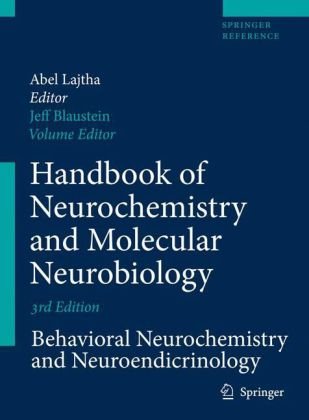
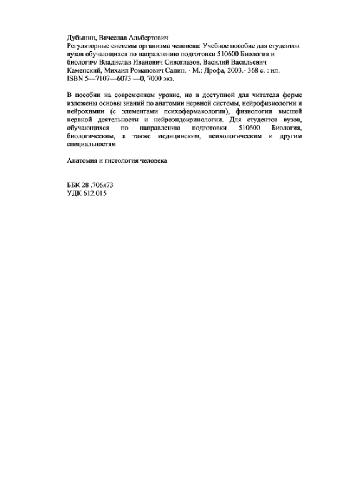
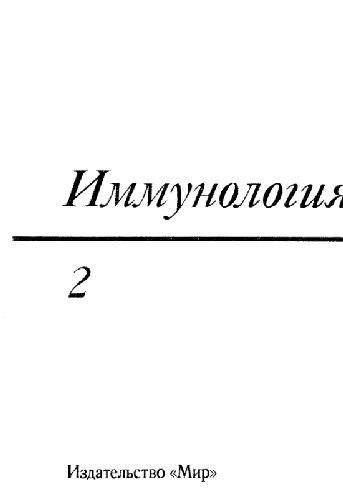
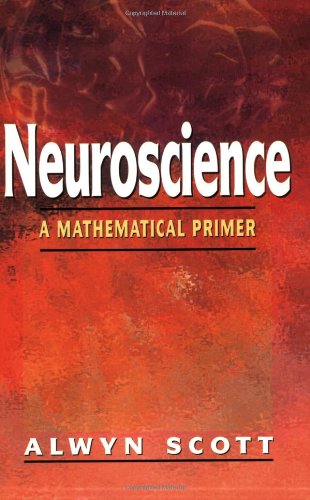
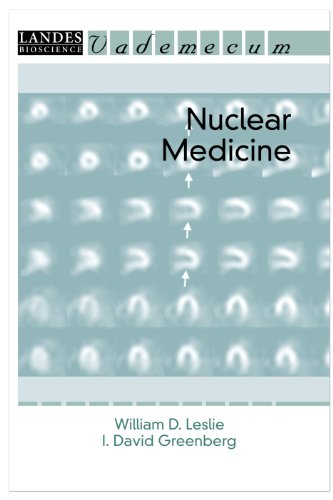
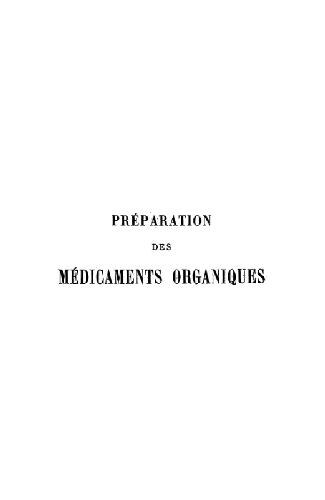

Reviews
There are no reviews yet.